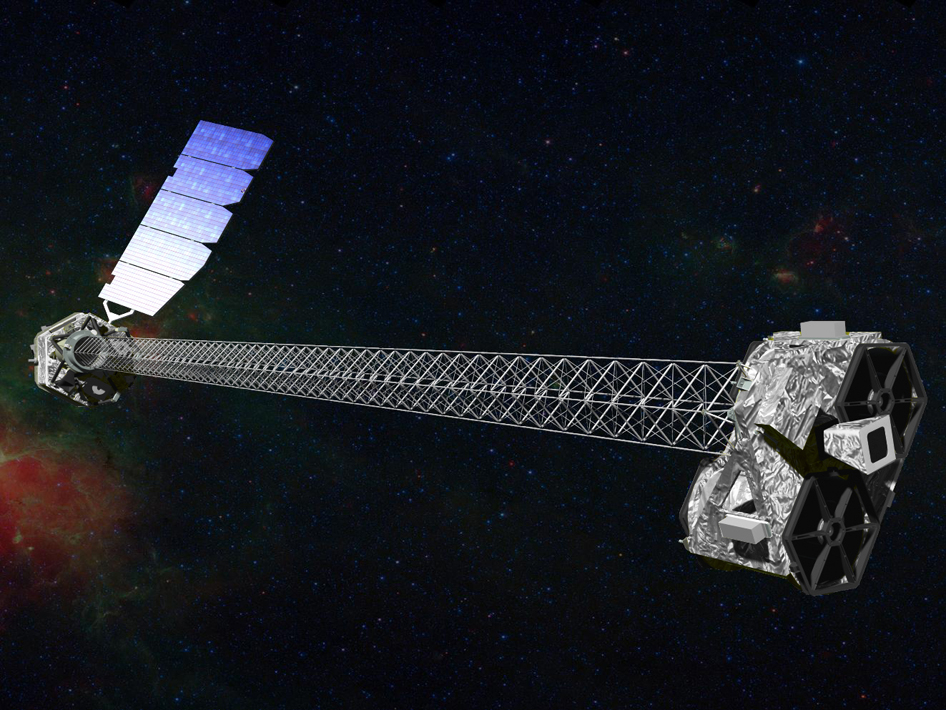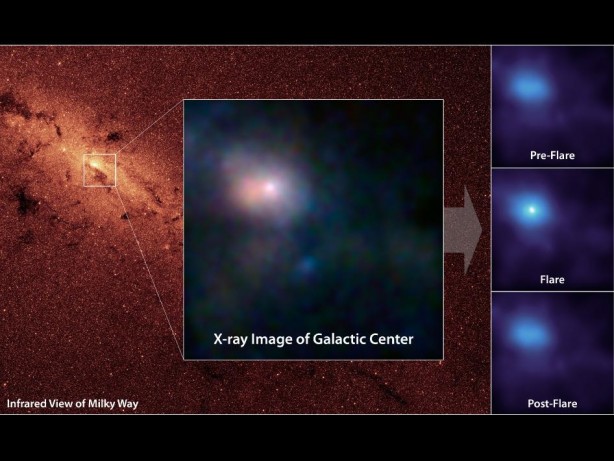Flare from giant black hole captured by NuSTAR

NASA’s state-of-the-art telescope NuSTAR (Nuclear Spectroscopic Telescope Array) captured image of a giant black hole in center of the Milky way. NuSTAR, launched June 13, is the only telescope capable of producing focused images of the highest-energy X-rays. The typically mild-mannered black hole, Sagittarius A* was observed during the middle of a flare-up.
“We got lucky to have captured an outburst from the black hole during our observing campaign,” said Fiona Harrison, the mission’s principal investigator at the California Institute of Technology (Caltech) in Pasadena. “These data will help us better understand the gentle giant at the heart of our galaxy and why it sometimes flares up for a few hours and then returns to slumber.”

For two days in July, the telescope teamed up with other observatories to observe Sagittarius A* (pronounced Sagittarius A-star and abbreviated Sgr A*), the name astronomers give to a compact radio source at the center of the Milky Way. Observations show a massive black hole lies at this location. Participating telescopes included NASA’s Chandra X-ray Observatory, which sees lower-energy X-ray light; and the W.M. Keck Observatory atop Mauna Kea in Hawaii, which took infrared images.
Sgr A* is found relatively quiet in comparison to giant black holes at the centers of other galaxies. Active black holes tend to gobble up stars and other fuel around them. Sgr A* is thought only to nibble or not eat at all, a process that is not fully understood. When black holes consume fuel — whether a star, a gas cloud or, as recent Chandra observations have suggested, even an asteroid — they erupt with extra energy.
NuSTAR is picking up X-rays emitted by consumed matter being heated up to about 180 million degrees Fahrenheit (100 million degrees Celsius) and originating from regions where particles are boosted very close to the speed of light. Astronomers say these NuSTAR data, when combined with the simultaneous observations taken at other wavelengths, will help them better understand the physics of how black holes snack and grow in size. NuSTAR team member Chuck Hailey of Columbia University in New York City said,
“Astronomers have long speculated that the black hole’s snacking should produce copious hard X-rays, but NuSTAR is the first telescope with sufficient sensitivity to actually detect them.”
NuSTAR’s mission operations center is at UC Berkeley, with the Italian Space Agency providing an equatorial ground station located at Malindi, Kenya. The mission’s outreach program is based at Sonoma State University in Rohnert Park, Calif. Goddard manages NASA’s Explorer Program. Caltech manages JPL for NASA.
Source: NASA/JPL
Featured image: NASA/JPL-Caltech
NASA’s Nuclear Spectroscopic Telescope Array, or NuSTAR, has captured these first, focused views of the supermassive black hole at the heart of our galaxy in high-energy X-ray light. The background image, taken in infrared light, shows location of our Milky Way’s humongous black hole, called Sagittarius A*, or Sgr A* for short. NuSTAR is the first telescope able to focus high-energy X-rays, giving astronomers a new tool for probing extreme objects such as black holes.

Fiona Harrison, “the gentle giant at the heart of our galaxy” – I don’t think a massive black hole is a gentle giant, so I want some of what Fiona is puffin. 😉